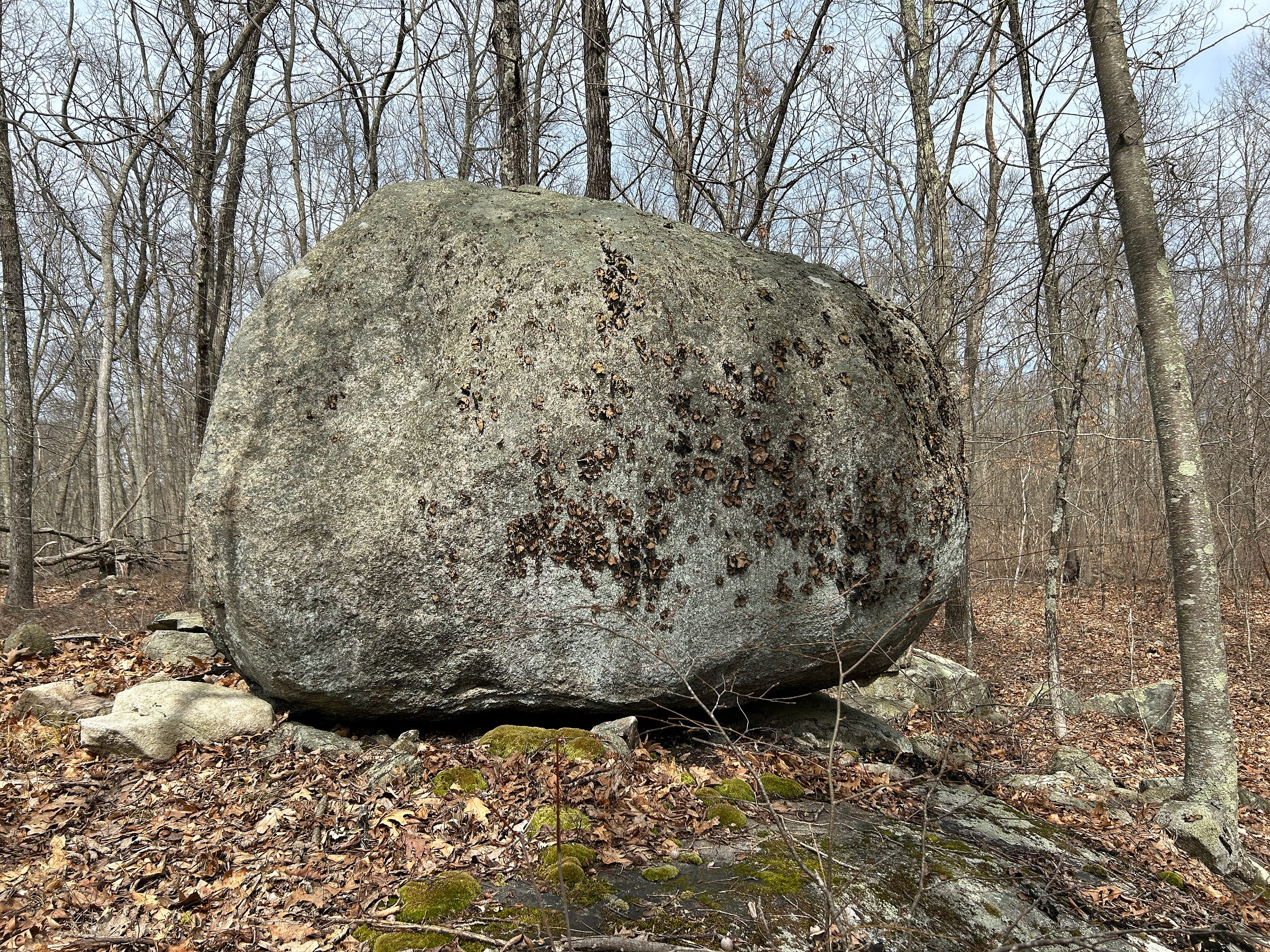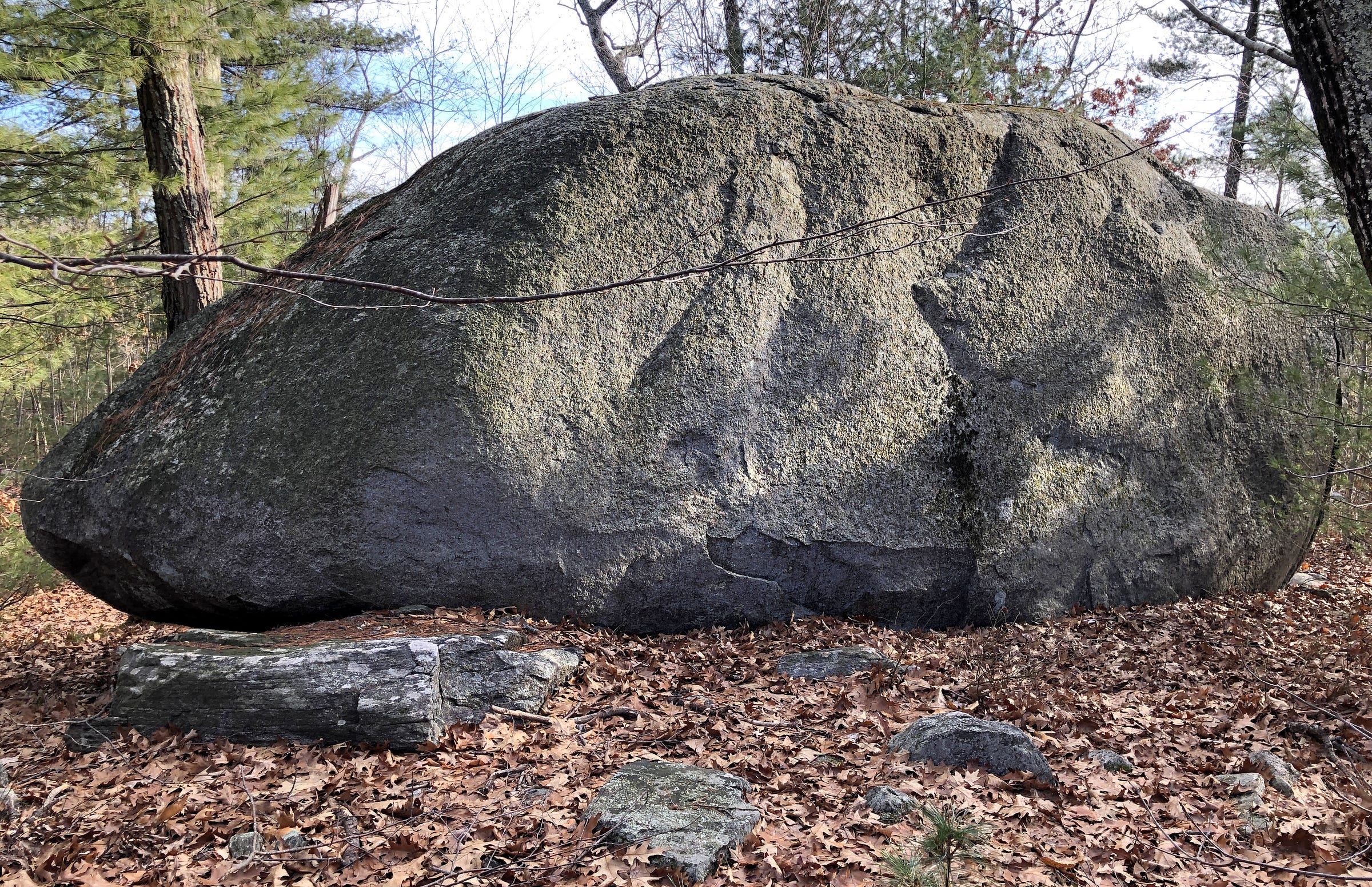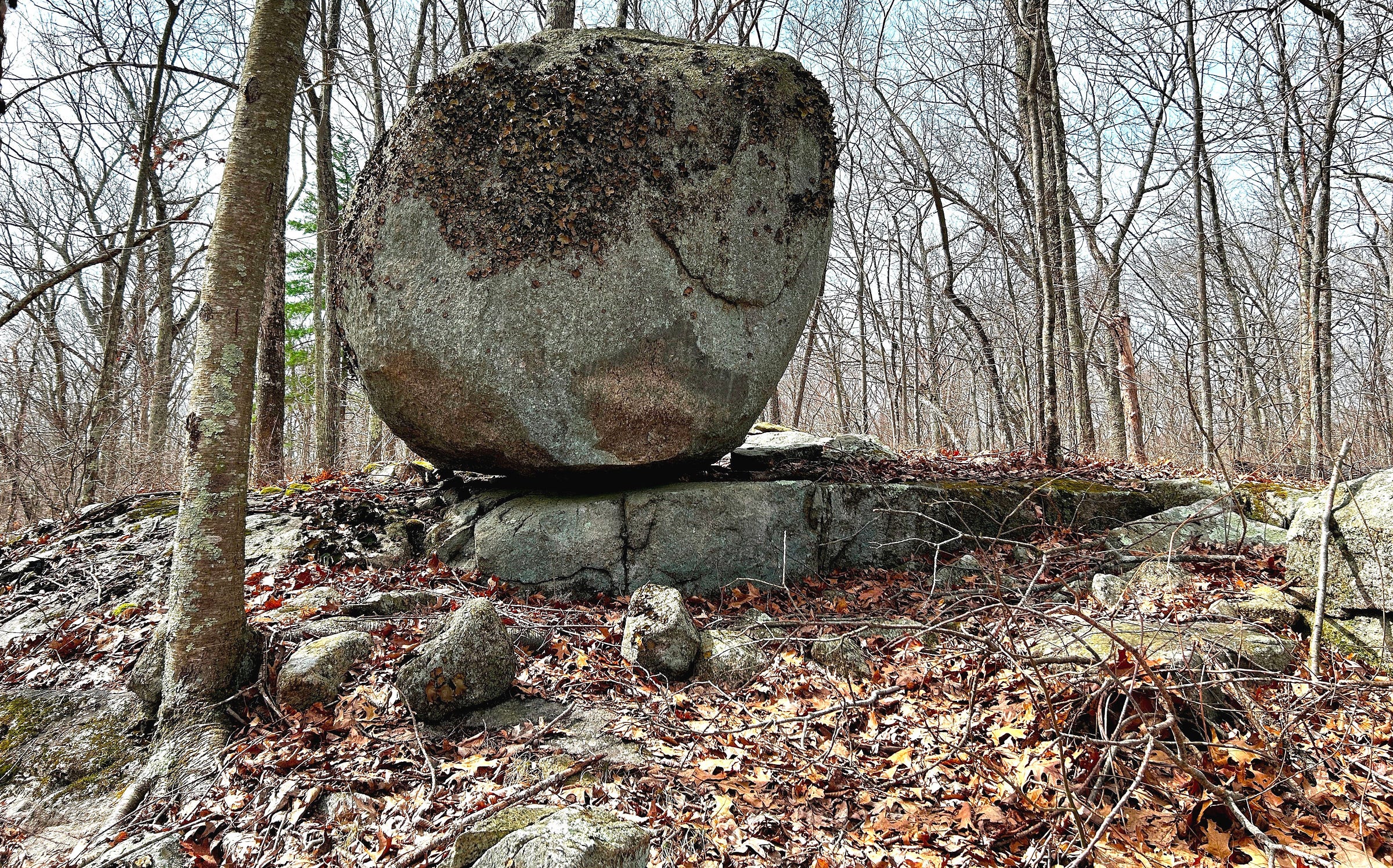“That’s a Glacial Erratic.”
This unhelpful phrase, akin to “That’s a rock”, is frequently offered when I post pictures and video of large boulders I’m proposing may have been perched or pedestaled or propped in place by ancient, Indigenous human agency.
It is entirely possible for a boulder to melt out of glaciers atop a mixed bed of mud, rock and ice which then washes away over time, leaving the boulder sitting balanced upon the remaining larger stones, and this natural process has likely created some of the examples of balanced boulders that we find.
Actual Glacial Erratics are boulders which the glaciers moved and deposited some distance away from their places of origin — they are “erratic” because they are out-of-place. There are many prominent glacial erratics across New England, most of which are not perched or otherwise propped-up by other stones.
Some of the larger boulders and a few large stone outcrops in New England are known locally as “Indian Stones” and are reported to have possessed importance to local Indigenous peoples at time of Contact — the several “King Philip Rock”s in Central Massachusetts come immediately to mind. Yet, despite this association with large stones, the possibility the Indigenous may have moved, perched or propped-up any large stones in the ancient past is often dismissed in favor of the geological explanation.
Which explanation is more parsimonious? When the myth that what’s now North America had been a vast, untamed, Pristine Wilderness developed in the 18th and 19th century (in spite of the archaeological and historical records), the idea these perched stones were all Glacial Erratics which had occurred naturally fit that narrative.
Now, as outlined for the popular reader in books such as Charles C. Mann’s 1491, we know there was no Pristine Wilderness. Millions of Indigenous people ranged across this continent and South America over at least 13,000 years, and probably for a lot longer, and they shaped and altered their landscapes in many different ways over time.
Knowing this, it would seem to become more likely anything perched or propped up prominently might have been managed by humans, and it therefore seems less parsimonious to explain all perched or balanced stones as simply the work of Nature.
And yet, the geological assumption remains — readily evident in the apparent, continued need some commenters have to explain to we delusional folk that these are rocks, as if this had not occurred to us.
Yes. Thank you for pointing that helpful fact out.
For everyone else, for those who understand that ancient Indigenous people were as capable intellectually and constructively as people are today and remain open to their human agency moving boulders, enjoy some views of this Possibly Perched Boulder in Holliston, Massachusetts.


















Share this post